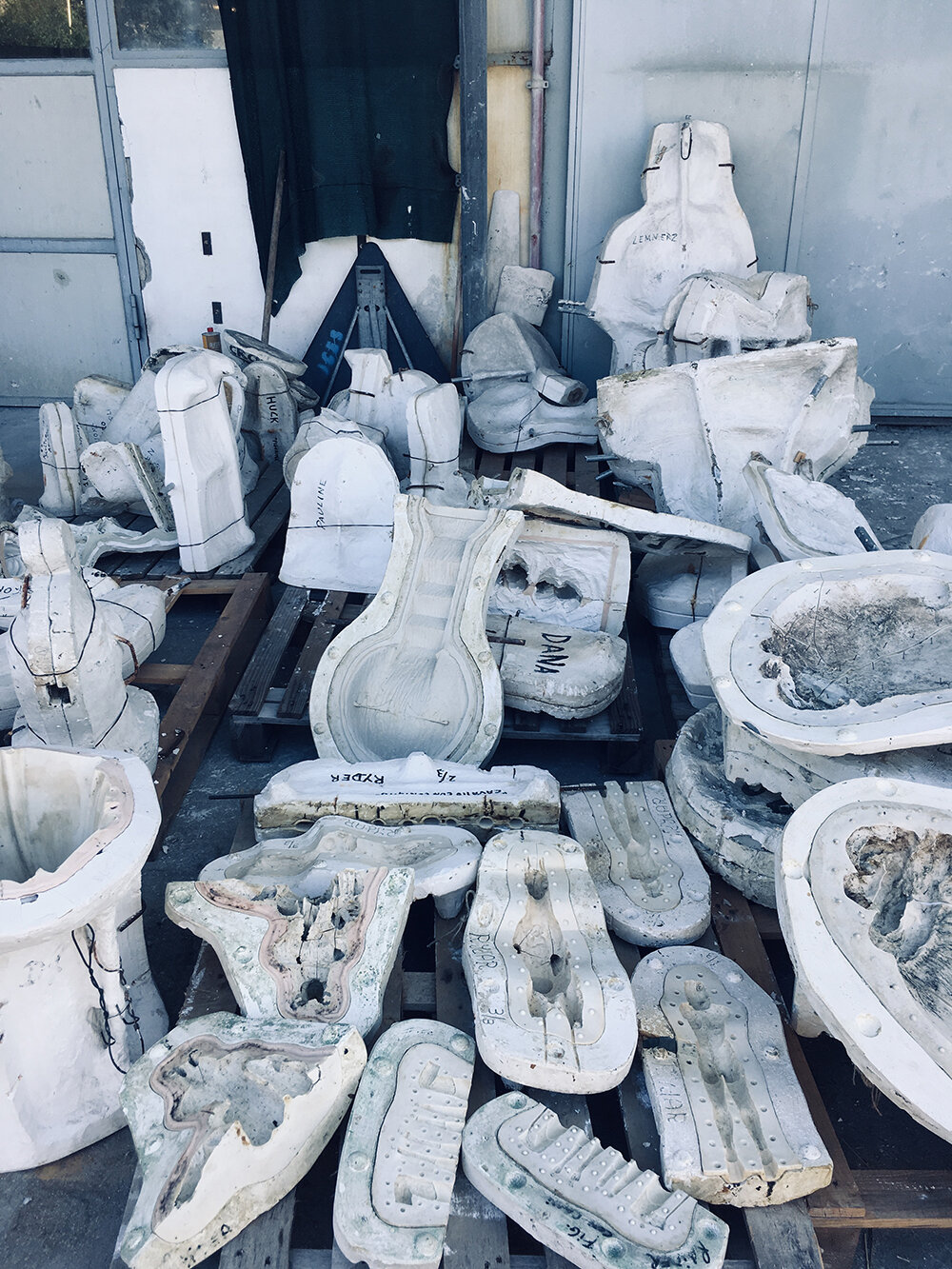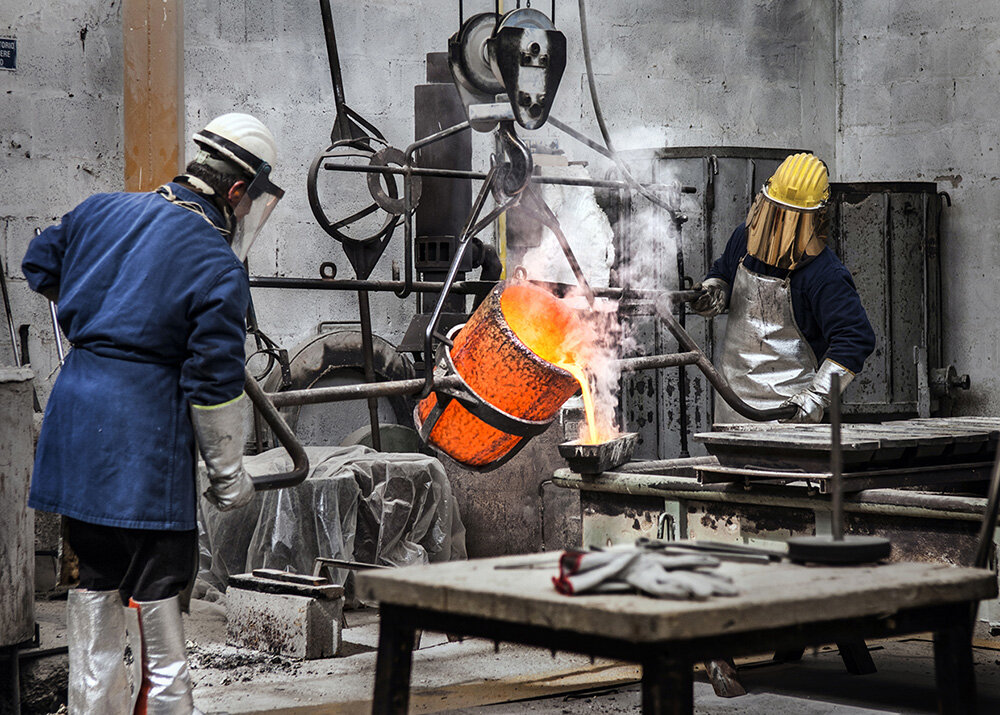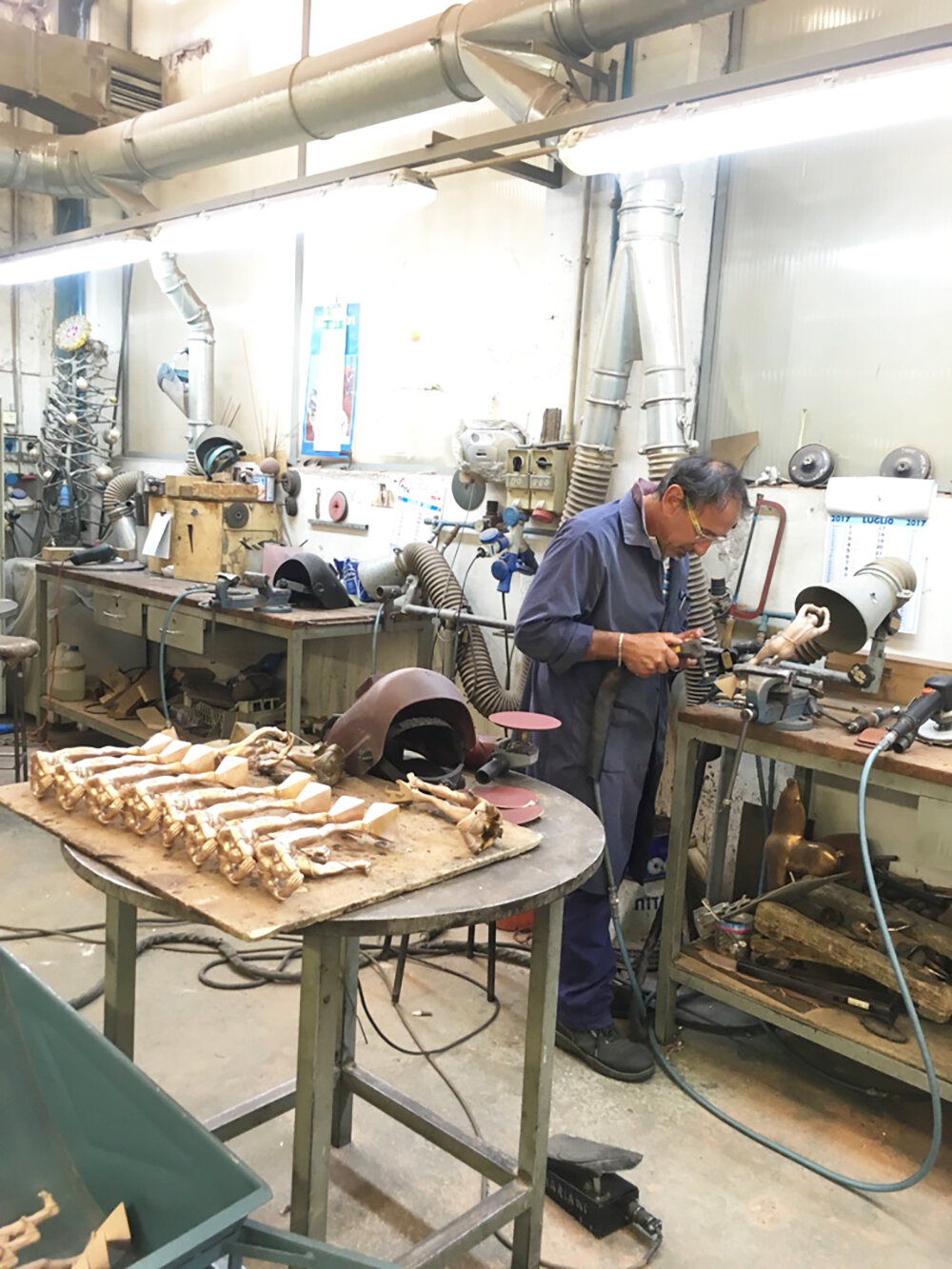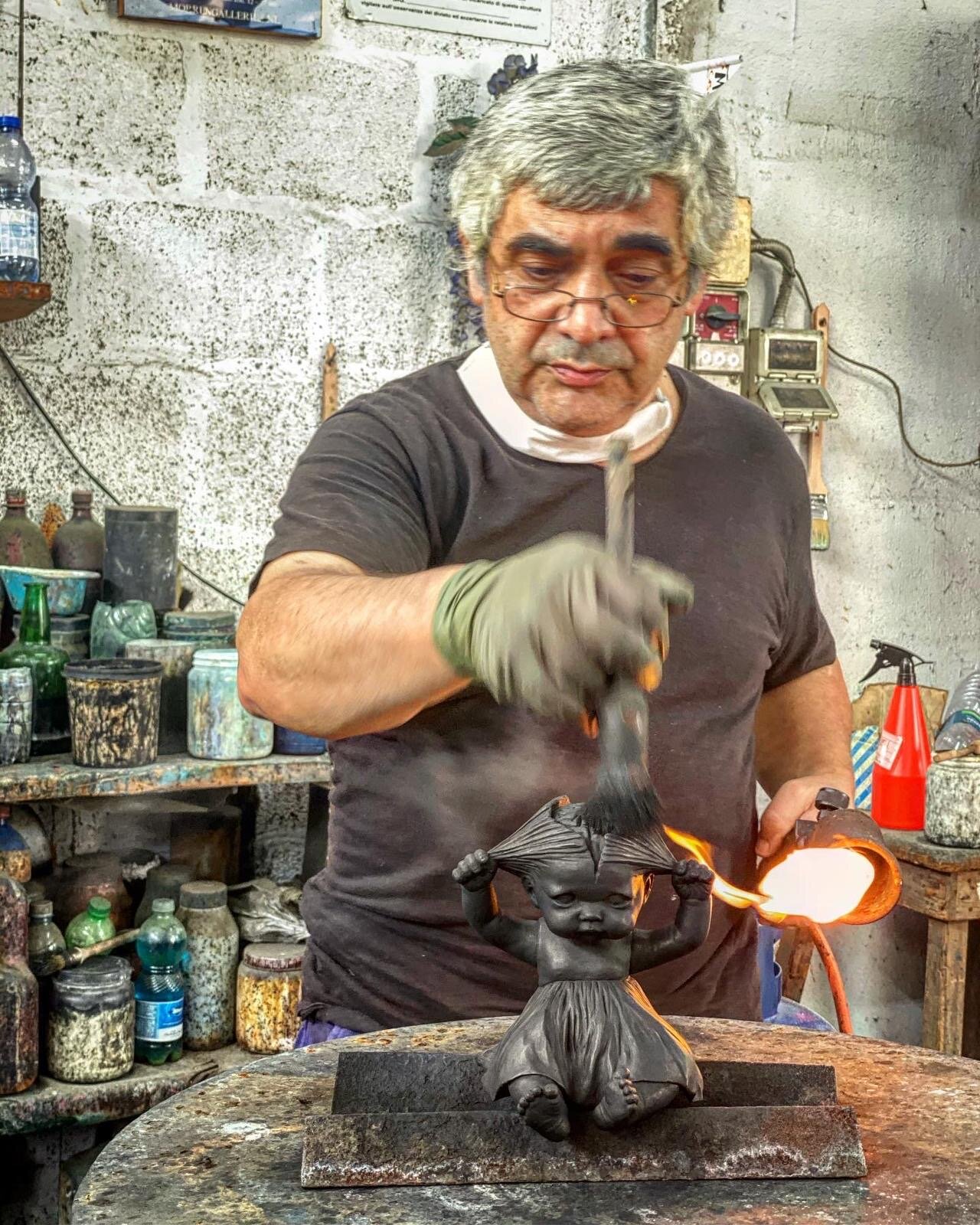Bronze casting at the Mariani Foundry in Pietrasanta
Zinck Editions is a sculptural counterpart in bronze to lithographic original edition prints.
Many art lovers and enthusiasts are introduced to art at lithographic workshops, and this is often where many aspiring art collectors start and build their collections. We love and applaud these lithographic workshops, and therefore we think a similar platform for edition sculptures in bronze is essential for both established and emerging artists.
Zinck Editions wants to introduce art to a wider audience, as well as retaining art collections and collectors who recurrently buy works in original limited editions.
Edition Bronze
Original bronze sculptures are never made in more than 8 copies.
When the edition exceeds 8 copies, the sculpture is still an original edition, but has to be seen as a limited edition multiple. Very similar to the lithographic editions on paper. However, each edition bronze will be unique because it is patinated by hand. The patinas will never be exactly the same on all sculptures, especially with colored patinas.
Our Workshop
Our workshop is based at Fonderia Mariani in Pietrasanta, Italy.
All our edition bronzes are made here.
Fonderia Mariani was founded in 1952 by Claudio Mariani.
Since then, the foundry has grown from a small workshop to one of the world’s leading artistic bronze casting foundries. Through pioneering experiments and innovative procedures the foundry has developed unique techniques which makes it able to produce very technically demanding castings. It is a bronze foundry with tremendous experience and technical capacity. It makes its work invaluable for the many artists who have their work produced at the artistic foundry.
The foundry’s close cooperation and dialogue with artists places it at the very front of artistic casting, and it has resulted in many exciting projects over the years. Today the foundry is led and owned by the Agolini family, who took over the foundry through family ties back in the 90s.
The production process
Magnifications and molds
The model to a bronze sculpture is not always 1:1. Therefore the sculpture is often based on a smaller model, which is magnified to the final sculpture’s dimensions. For this process the foundry has extensive experience and expertise. Using plaster or clay the new model is built, and when it has reached its final dimensions an imprint is made in rubber and plaster, which then becomes the mold for casting. The foundry has its own workshop for making molds, and this makes it possible for the artist to be involved early in the process.
Wax
The first step in manufacturing the bronze sculpture is to create a copy of the actual sculpture in wax. For this process the molds based on the model in full size are used. Smaller sculptures are made true to size, whereas larger sculptures are made in several parts. This applies right up to the casting itself. By working with models in wax the artisan is able to retouch and process the sculpture so that it is exactly as the artist intends it to be. It is also during this part of the process where the artist can be involved and have as much influence as possible on final product in cooperation with the foundry. The wax model then works as a new model for making a ceramic mold for casting. The advantage about wax in this context is that it can easily be melted out of the mold, and re-used for other sculptures.
Ceramic coating
The wax replica is now covered by a thin layer of liquid ceramic coating on all sides, and renders very precisely every contour of the wax sculpture. This provides us with the best results for the final work in bronze. When the ceramic coating has dried and covers the wax, the new ceramic molds are burnt in an oven so the ceramic layer can harden and the wax will melt out for re-use. When the wax is gone we are left behind with a new negative mold that will be used for the casting of bronze.



Casting
The bronze is poured into the ceramic mold in suitable containers filled with sand. The sand is used to ensure a safe production, as well as stability for the ceramic mold. Now the melted bronze is led into the ceramic mold, and mirrors the model in wax down to the smallest detail. Once the bronze has cooled, the ceramic coating is knocked off the bronze sculpture which then gets sandblasted and prepared for the next step in the process.
Retouching
Before the casted bronze is ready for the final stage, the sculptures pass by the retouching workshop. During this process, remains in bronze after the casting are removed from the surface of the sculpture. The remains are typically tubes and cubs first made in wax to lead the bronze in to the ceramic mold. Therefore both the tubes and the cubs are also casted in bronze, but not part of the final sculpture. Then the surface is retouched and polished. Sculptures in several parts are welded together. The sculpture is almost done now, but before it leaves the foundry, it has to stop by the workshop for patination.
Patination
In the foundry’s workshop for patination, the desired patina is selected for the sculpture’s surface. Initially, the patination is a protective coating for the metal, and consists of an oxidation with chemicals. However it is also possible to provide the bronze surface with a certain color or hue. It can range from a bronze colored brown expression to blue or green shades and more.






